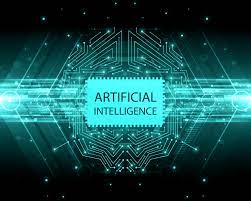An artificial intelligence (AI)-driven system was autonomously able to learn about some Nobel Prize-winning chemical reactions and design a successful laboratory procedure to make them, new research published in the journal Nature describes.
One of the most complex reactions that their creation, named 'Coscientist' by the researchers, was able to pull off pertains to organic chemistry and is known as palladium-catalysed cross couplings, which in 2010 earned its human inventors the Nobel Prize for Chemistry in recognition of the role of these reactions in pharmaceutical development process.
"This is the first time that a non-organic intelligence planned, designed and executed this complex reaction that was invented by humans," said Gabe Gomes, a Carnegie Mellon University (US) chemist and chemical engineer, who led the research team that assembled and tested Coscientist.
The researchers said that the demonstrated abilities of Coscientist show the potential for humans to productively use AI to increase the pace and number of scientific discoveries, as well as improve the replicability and reliability of experimental results.
The software and silicon-based parts, or the 'brains', of Coscientist primarily comprise large language models, which are known to power the functioning of chatbots like GPT-4, the team said in their study.
Large language models are trained on huge amounts of textual data, as a result of which, these AI models are capable of processing, manipulating and generating in the natural language, or the language that humans use to communicate with each other.
The researchers also equipped Coscientist with several different software modules, which together allowed it to do things that all research chemists do: search public information about chemical compounds, find and read technical manuals on how to control robotic lab equipment, write computer code to carry out experiments, and analyse the resulting data to determine what worked and what didn't.
"We tried to split all possible tasks in science into small pieces and then piece-by-piece construct the bigger picture," said doctoral student Daniil Boiko and one of the authors, who designed Coscientist's general architecture and its experimental assignments. "In the end, we brought everything together." The researchers observed that Coscientist demonstrated "chemical reasoning", which Boiko described as the "ability to use chemistry-related information and previously acquired knowledge to guide one's actions." The machine used publicly available chemical information encoded in the Simplified Molecular Input Line Entry System (SMILES) format - a type of machine-readable notation representing the chemical structure of molecules - and made changes to its experimental plans based on specific parts of the molecules it was scrutinising within the SMILES data, the researchers described.
They said that their 'eureka' moment was when they saw it asking all the "right questions".
The machine sought answers predominantly on Wikipedia, along with a host of other sites including those of the American Chemical Society, the Royal Society of Chemistry and others containing academic papers describing Suzuki and Sonogashira reactions, they said. These reactions were discovered in the 1970s and use the metal palladium to catalyse bonds between carbon atoms in organic molecules.
In less than four minutes, the team said, Coscientist had designed an accurate procedure for producing the required reactions using chemicals provided by the team.
They also analysed the result samples produced by the AI-system and found them to carry the "spectral hallmarks of Suzuki and Sonogashira reactions", which have proven extremely useful in producing new types of medicine to treat inflammation, asthma and other conditions.
However, with such potential power came the need to use it wisely and guard it against misuse, according to Gomes, adding that understanding the capabilities and limits of AI is the first step in crafting informed rules and policies that can effectively prevent harmful uses of AI, whether intentional or accidental.
Gomes is one of several researchers providing expert advice and guidance for the US government's efforts to ensure AI is used safely and securely.
Except for the headline, this story has not been edited by The Telegraph Online staff and has been published from a syndicated feed.











